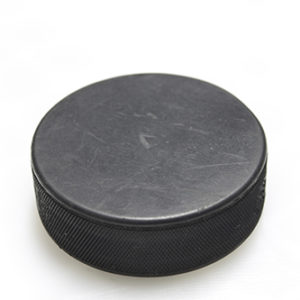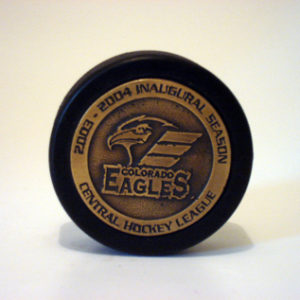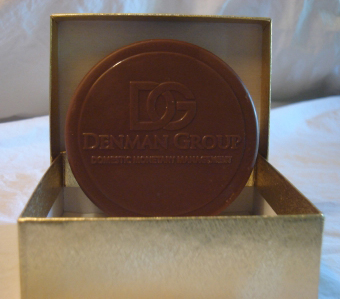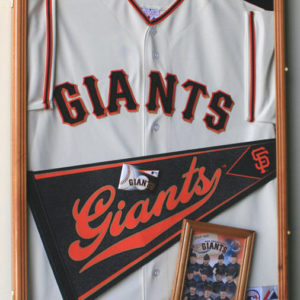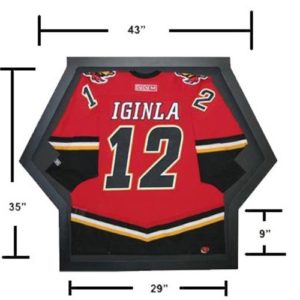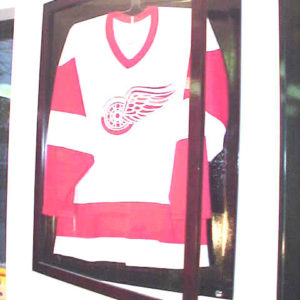The history of ice hockey is far older than the pucks we know today, but the general culture of ice hockey as we know it, most probably starts with English soldiers playing a kind of field hockey on ice in Halifax, Nova Scotia, Canada. The basic instinct to hit a ball with a stick is seen developed in isolated cultures all over the world, doing it on ice however restricted to colder climates, is still older than the first pucks. Pucks were first recorded as being used in Ontario at the Kingston Harbor in 1860 (from the verbs “to hit” or “to strike” in Hurley). To give an exact person, place or event would be a very personal history of ice hockey; and just as everyone has their favorite team, we all have our favorite version of “the facts” as well as philosophies about what it means to play. But one thing people can’t argue with is exactly where and how the very first “indoor” ice hockey match occurred, as it seems to be where our gladiator culture emerged.
March 30, 1875 at Montreal’s Victoria Skating Rink the first indoor hockey match was organized by James Creighton, an ice Hurley player (considered by some the father of ice hockey) was from Halifax and studying engineering at McGill University in Montreal at the time. Nine man sides were used and the “field” of ice was 80ft by 204ft. Creighton’s team managed to win the game with 2-1, and most importantly, our ice gladiator sport was born! Yes! The game ended in one of the greatest fights ever seen. The wire dispatch from Kingston’s Daily British Whig in Montreal reported the following “Shins and heads were battered, benches smashed, and the lady spectators fled in confusion,” that definitely sounds like ice hockey!
We may not be able to agree between ourselves on any one place or time where ice hockey first appeared in the world, but the culture of indoor ice hockey we now see all over the world seems to have been born with the need for speed and exercise. Pucks are naturally a part of this culture and symbols of our loyalties. The word puck can be traced back to “pouke” in the 1300’s with the Old English meaning of “devil” or “evil spirit” and later the verb “to poke”. Shakespear’s Mr. Robin Goodfellow. The “Puck” was a mischievous Satyre spirit in “A Midsummer Night’s Dream” who is constantly getting into trouble, by “poking people the wrong way” if you may.
The verb to puck or to hit would perhaps have derived from this mythological trickster of ancient Greece, but very unlikely (even though it would make a funny anecdote to tell). Ice hockey pucks get their name from the Hurley word to poke the ball around on the field, or “puck the ball”. However the fact that pouke from Old English inspired both Puck and the Hurely verb, historians take the origin of the word into a philosophical debate around such phrases as “to poke fun” or the term “as dumb as a puck” which have been around for a long time and language, is a living thing, so its really kind of useless to argue about (although fun sometimes).
Ice hockey more evolved over time from a bunch of good ideas, just like most professional sports have done, rather than simply magically appearing. Language is like that, evolving, made of spoken words rather than written. Like language, pucks are what people say they are, not what history tells us, and that is important to remember. If a hockey player says “pucks are for hunting deer”, then, for that person, pucks have a purpose above and beyond ice hockey. Those are just the kinds of jokes we are forced into listening to in the pub after the game (and if it’s a friend, we always laugh).
Not that everyone is into pubs of course, but the spirit of our ice hockey culture is based on what we refer to as friendship. As fans, we should never take just one side, we should first and foremost protect our friends, even if they route for a rival team. Any good ice hockey player knows that. Your mates are everything out there on the ice, and shirts give us pride, that is true, but in the stands, shirts are overlooked when we need to be a team to survive. Brawling out on the ice is illegal, but it is a reality of our culture and without friends, a stand-alone doesn’t last the season.
Competition sports like ice hockey are reminiscent of ancient Rome. Sports have existed in recorded western cultures as early as Egypt; from Egypt to Greece, to Rome, to Northern Europe to Canada to the US, and across the globe; games like hockey have existed in one form or another. But the Gladiators of Rome are what best describe our culture today. A sport of ice gladiators. A game of battle and war, of strategy and tactics, ice hockey comes naturally to those who need to move their muscles in achievement of physical goals.
Pucks don’t need to be used as weapons for hunting deer, nor should our sport be about death. Ice hockey is about competition, winning, skill and power, the fundamentals. Pucks used in NHL are made from vulcanized rubber. As early as 1831 we have had technology to produce products made from vulcanized rubber, but these pucks were only official in 1886 with three inches in diameter and one inch thick. The first pucks on ice, were developed for ice Hurley, and were basically a vulcanized rubber Hurley ball with the tops and bottoms cut off so they would stay on the ice surface. When ice hockey left McGill University and went on to form amateur leagues, rules and equipment became standardized along with ice hockey pucks. But cultures change and evolve over time, as has ice hockey in the past and will continue to do so, as long as people continue to enjoy friendly competition sports. Pucks will always be the object of our competition in ice hockey, they can be the basis for sportsmanship and if so willing, “friendly” rivalry as well.

